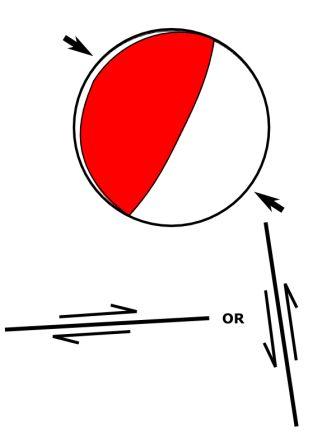As Japan and the rest of the world struggle to make sense of the devastating earthquake, tsunami, and nuclear scare, science bloggers are sharing facts to help explain what happened. Where science bloggers excel is not only understanding what happens, but knowing how to explain it so anyone can understand.
The Earth deformed
Theoretical astrophysicist Ethan Siegel of Scienceblogs.com's Starts With A Bang! provides a basic explanation:
The Earth is built like a giant, spherical layer cake. The inner core — made up of mostly iron and nickel — is the densest of all the layers, while the lithosphere — the Earth's crust — is the least dense… if we want the most stable Earth possible, it would be a perfect “onion”, with the densest, heaviest elements being concentrated at the center, and then — with each outer layer — a progressively lower and lower density. And it wants to be like that, packed as tightly as possible, the same way that a stone sinks in water, an iceberg floats on an ocean, or a helium balloon rises in air… unfortunately, the Earth is not in its most stable possible configuration right now. But, over time, gravity is doing everything it can to help it get there. How? By bringing denser, more massive chunks closer to the center, and uplifting lighter, less dense pieces… And that's what happens — energy-wise — every time we have an earthquake!
Meanwhile, Chris Rowan, a geologist in Chicago, provides a great primer of what happened in Japan his blog, Highly Allochthonous.
Friday's earthquake strongly registered on seismometers around the world, with seismic waves rippling across the North America and maxing out instruments as far away as the United Kingdom. By combining data from the whole global network of seismometers, a picture of how the earth deformed in the earthquake, represented by a beachball-like focal mechanism, can be calculated. The focal mechanism for this earthquake, shown below, indicates compression, along either a shallowly west-dipping or a steeply east-dipping fault.

Focal mechanism for the main shock, and cross-sections of the two possible fault orientations. Source: Chris Rowan, Highly Allochthonous
Interestingly, Siegel and many other scientists (such as Irene Klotz at Discovery News) say that by bringing more dense material closer to the earth's core the earth's rotation speed actually increased – shortening our day by a very small fraction of a second. The principle is similar to what one sees when a figure skater or dancer spins and then speeds up by folding in her or his arms.
Sadly, John Horgan at Scientific American's Cross Check blog says science is not at the point where we can accurately predict earthquakes, though it's not from lack of trying. The most obvious tactic – trying to predict earthquakes by examining previous earthquake data and looking for patterns or precursory events – hasn't worked. Further:
Many other prediction methods have been proposed and in some cases tested. These involve detection of such alleged quake precursors as surges in ground water; emissions of the radioactive gas radon; fractoluminescence, or flashes of light emitted by compressed rock; unusual tidal activity; low-frequency electromagnetic waves; and unusual animal behavior. One long-running experiment in Japan involves monitoring catfish, which are supposedly sensitive to electromagnetic activity that precedes quakes. None of these approaches has proven reliable.
However, this isn't to say that science hasn't saved many lives from earthquakes. For example, thanks to tremendous advances in the fields of engineering.
Tsunamis in slow motion
By now everyone has seen the surreal videos of a seemingly unstoppable wave of debris crashing on shore, engulfing cities and farmland, even dragging burning buildings in its wake. As people begin to ask what could possibly have caused such a thing, science bloggers are stepping in to answer.
On GeoMika, physicist and geophysicist Mika McKinnon, provides an exhaustive primer on tsunamis, and shows how they differ from tidal waves or wind waves.
The Woods Hole Oceanographic Institute posted a video on YouTube last year (shared by GrrlScientist at Guardian's Punctuated Equilibrium) that shows how water flows during a tsunami.
New Zealand blogger Grant Jacobs also provides a wealth of resources from the US Government's National Oceanic and Atmospheric Administration and other sources on forecasting and warning systems, including an interactive map of buoys the US government places to track tsunamis.






